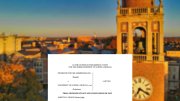In a ruling handed down on October 18, Judge Loretta C. Biggs, of the U.S. District Court for the Middle District of North Carolina, rejected Students for Fair Admissions’ (SFFA) lawsuit against the University of North Carolina (UNC)—the latest effort by Edward Blum, who opposes the consideration of race in admissions decisions, to overturn the law governing permissible affirmative action policies and procedures. In October 2019, U.S. District Court judge Alison Burroughs ruled in favor of Harvard in Blum’s SFFA lawsuit against the College’s holistic admissions reviews, which can take applicants’ race into consideration. In November 2020, the First Circuit Court of Appeals upheld that decision. And SFFA has now asked the Supreme Court to review the case. With the UNC ruling—the case went to trial last November—Blum’s arguments have been found lacking, on the facts and the law, as they pertain to both a private university, like Harvard, and a public one.
Biggs did not mince words in her ruling:
UNC has met its burden of demonstrating with clarity that its undergraduate admissions program withstands strict scrutiny and is therefore constitutionally permissible. In sum, the University has demonstrated that: (1) it has a compelling and substantial interest in pursuing and attaining the educational benefits of diversity and has offered a reasoned decision for doing so, entitling its decision to judicial deference; (2) to accomplish its interest it is necessary that the University admit and enroll a diverse student body to include racial diversity; (3) the University engages in a highly individualized, holistic admissions program that is narrowly tailored in that it considers race flexibly as only a “plus factor” among many factors for each and every applicant and race is not a defining feature in any of its admissions decisions; and (4) the University has conducted and continues to conduct good faith serious consideration of race neutral strategies and has not found any alternatives that would promote its compelling interest about as well and at tolerable administrative expense as its current admissions program.
Moreover, unpacking SFFA’s statistical analyses, she found, “[T[he evidence shows that, as a whole, underrepresented minorities are admitted at lower rates than their white and Asian American counterparts, and those with the highest grades and SAT scores are denied twice as often as their white and Asian American peers”—contrary to the argument SFFA has tried to advance.
Putting the legalisms of the proceedings into plainer English, she continued:
Ensuring that our public institutions of higher learning are open and available to all segments of our citizenry is not a gift to be sparingly given to only select populations, but rather is an institutional obligation to be broadly and equitably administered. While no student can or should be admitted to this University, or any other, based solely on race, because race is so interwoven in every aspect of the lived experience of minority students, to ignore it, reduce its importance and measure it only by statistical models as SFFA has done, misses important context to include obscuring racial barriers and obstacles that have been faced, overcome and are yet to be overcome. As the Court in Grutter explained, by virtue of our Nation’s struggle with racial inequality, such minority students, as in this case, are both likely to have experiences of particular importance to an institution’s mission and less likely to be admitted in meaningful numbers on criteria which ignore those experiences. As articulated by one of UNC’s experts, “the work associated with diversity and inclusion is complicated and challenging and is an ongoing iterative process.” While the University’s current admissions program has captured the context described in Grutter, UNC continues to have much work to do.
The Chronicle of Higher Education interpreted the ruling as “a clear win” for UNC, noting not only the substance of the ruling but Biggs’s careful reliance on Supreme Court precedent, as affirmed in Grutter v. Bollinger—involving the University of Michigan, decided in 2003. That decision, and those in other cases concerning affirmative action in admissions, draw upon the Supreme Court’s 1978 decision in Regents of the University of California v. Bakke, which helped to define the permissible consideration of race as a factor in admissions, based on policies and procedures established by Harvard. The Chronicle also noted the sections in the new opinion that point to the continued underrepresentation of highly qualified minority students among those being admitted now, despite UNC’s consideration of race among the factors in its holistic review of applicants, and the salience of past and present racially discriminatory practices and behaviors. (Inside Higher Ed quoted Blum as saying of the ruling, “Students for Fair Admissions is disappointed that the court has upheld UNC’s discriminatory admissions policies. We believe that the documents, emails, data analysis and depositions SFFA presented at trial compellingly revealed UNC’s systematic discrimination against nonminority applicants.”)
As of now, Harvard and UNC can claim to have the facts and the law on their side. But Blum’s appeal of the Harvard case to the Supreme Court, and his planned appeal of the UNC ruling, point to the underlying reality. He hopes to win a hearing at the highest court in the land, which has been reconstituted by recent appointments, perhaps making a majority of justices inclined to a worldview different from the one that prevailed in Bakke and Grutter.
If Blum succeeds in having his appeal of an SFFA case heard, the facts may stand, but the law under which Harvard, UNC, and other institutions now conduct admissions, including consideration of race, might not—and the rules governing higher-education admissions, largely intact for more than four decades, might change substantially.









